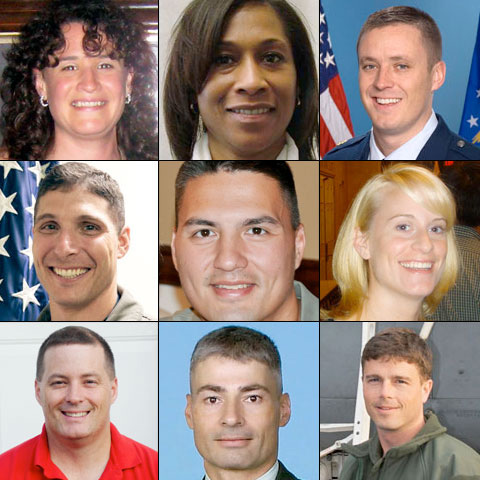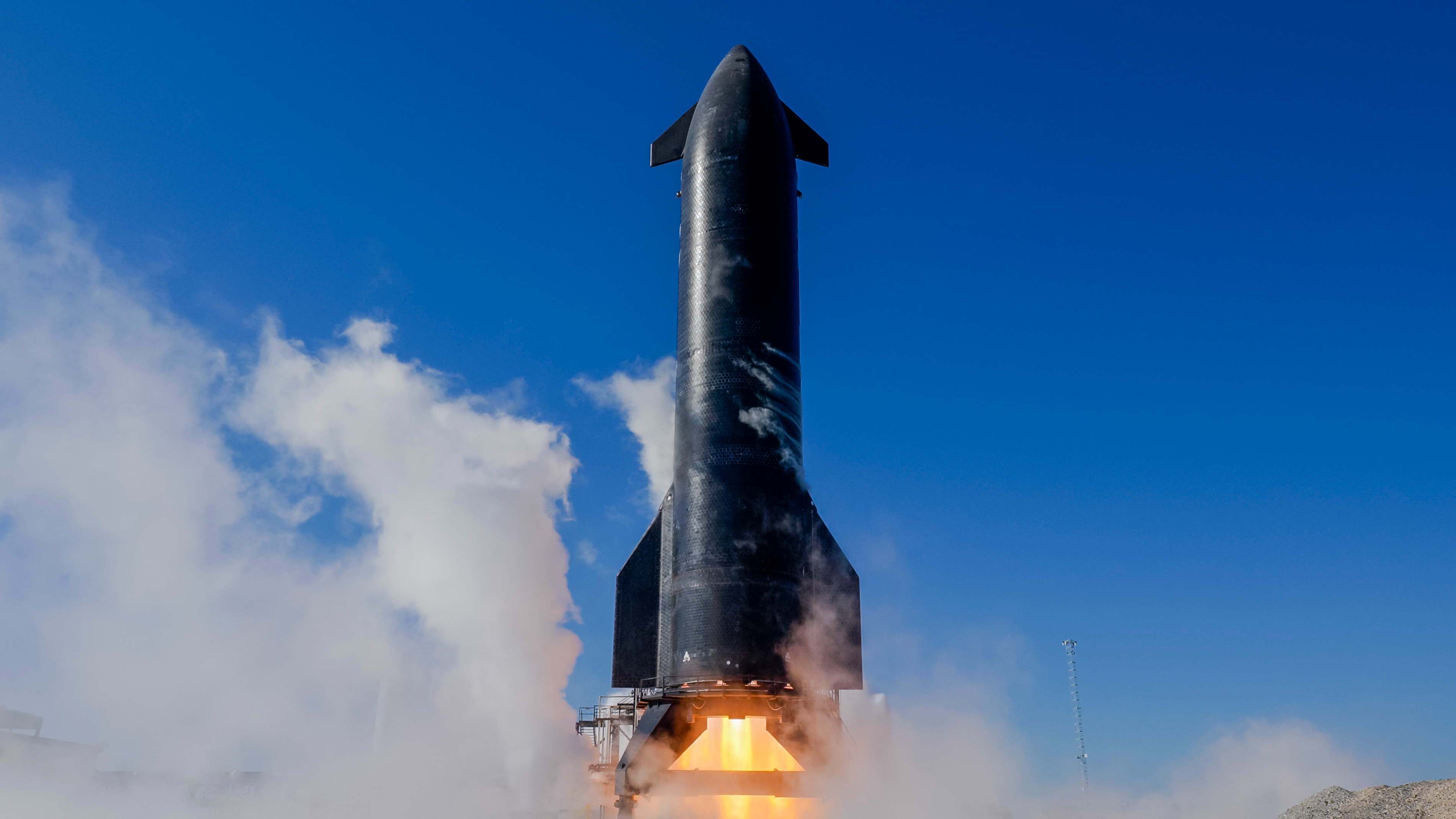NASA Unveils Astronaut Class That Will Never Fly on Shuttle

This story was updated at 1:10 p.m. EDT.
NASA on Monday unveiled the nine Americans making up its newest class of astronaut candidates, a group that will never fly on the space shuttle.
The six-man, three-woman astronaut class of 2009 is NASA?s first batch of new spaceflying recruits in five years. The candidates are expected to report to NASA?s Johnson Space Center in Houston, Texas, in August to begin two years of training.
?This is a very talented and diverse group we've selected,? said Bill Gerstenmaier, NASA?s space operations chief, in a statement. ?They will join our current astronauts and play very important roles for NASA in the future.?
NASA?s three aging space shuttles are due to retire in 2010 after completing construction of the International Space Station. The new astronaut candidates, therefore, will likely only train to fly aboard the space station, Russian Soyuz vehicles, and NASA?s shuttle replacement - the Orion Crew Exploration Vehicle and its Ares rockets tapped to ferry spaceflyers to orbit and back to the moon by 2020. The 11 astronauts of NASA?s 2004 class are all expected to have flown once on a shuttle by the fleet?s retirement next year, NASA officials have said.
?In addition to flying in space, astronauts participate in every aspect of human spaceflight, sharing their expertise with engineers and managers across the country,? Gerstenmaier said.
The 2009 astronaut class is a relatively young group, with ages ranging from 30 to 43. NASA selected the nine from a field of 3,500 applicants to make up the new class, its 20th group since the original seven Mercury astronauts were unveiled in 1959.
Breaking space news, the latest updates on rocket launches, skywatching events and more!
The group is a mix of military and civilians that includes: a technical intelligence officer with the Central Intelligence Agency (CIA), two NASA flight surgeons, a space station flight controller, a sprint-running molecular biologist, as well as two Navy test pilots, a U.S. Air Force test pilot and the special assistant to the Vice Chairman of the Joint Chiefs of Staff at the Pentagon.
"I think this is a thrilling time to be part of the space program, and I feel very fortunate to be starting as an astronaut candidate at this particular time," said Kathleen Rubins, 30, the molecular biologist, in a NASA interview.
Here?s a brief look at NASA?s new astronaut class:
- Serena M. Aunon, 33, of League City, Texas; University of Texas Medical Branch-Wyle flight surgeon for NASA?s space shuttle, International Space Station and Constellation programs; born in Indianapolis, Ind. Aunon holds degrees from George Washington University, the University of Texas Health Sciences Center in Houston, and UTMB.
- Jeanette J. Epps, 38, of Fairfax, Va.; technical intelligence officer with the Central Intelligence Agency; born in Syracuse, N.Y. Epps holds degrees from LeMoyne College and the University of Maryland.
- Jack D. Fischer, Major U.S. Air Force, 35, of Reston, Va.; test pilot; U.S. Air Force Strategic Policy intern (Joint Chiefs of Staff) at the Pentagon; born in Boulder, Colo. Fischer is a graduate of the U.S. Air Force Academy and Massachusetts Institute of Technology.
- Michael S. Hopkins, Lt. Colonel U.S. Air Force, 40, of Alexandria, Va.; special assistant to the Vice Chairman (Joint Chiefs of Staff) at the Pentagon; born in Lebanon, Mo. Hopkins holds degrees from the University of Illinois and Stanford University.
- Kjell N. Lindgren, 36, of League City, Texas; University of Texas Medical Branch-Wyle flight surgeon for NASA?s Space Shuttle, International Space Station and Constellation Programs; born in Taipei, Taiwan. Lindgren has degrees from the U.S. Air Force Academy, Colorado State University, University of Colorado, the University of Minnesota, and UTMB.
- Kathleen (Kate) Rubins, 30, of Cambridge, Mass.; born in Farmington, Conn.; principal investigator and fellow, Whitehead Institute for Biomedical Research at MIT and conducts research trips to the Congo. Rubins has degrees from the University of California-San Diego and Stanford University.
Rubins is not the youngest person to be selected for NASA?s astronaut corps. Astronauts Sally Ride and Tammy Jernigan were both 26 at the time of their selections in 1978 and 1985, respectively.
- Scott D. Tingle, Commander U.S. Navy, 43, of Hollywood, Md.; born in Attleboro, Mass.; test pilot and Assistant Program Manager-Systems Engineering at Naval Air Station Patuxent River. Tingle holds degrees from Southeastern Massachusetts University (now University of Massachusetts Dartmouth) and Purdue University.
- Mark T. Vande Hei, Lt. Colonel U.S. Army, 42, of El Lago, Texas; born in Falls Church, Va.; flight controller for the International Space Station at NASA?s Johnson Space Center, as part of U.S. Army NASA Detachment. Vande Hei is a graduate of Saint John?s University and Stanford University.
- Gregory R. (Reid) Wiseman, Lt. Commander U.S. Navy, 33, of Virginia Beach, Va.; born in Baltimore; test pilot; Department Head, Strike Fighter Squadron 103, USS Dwight D. Eisenhower, based out of Oceana, Va. Wiseman is a graduate of Rensselaer Polytechnic Institute and Johns Hopkins University.
Currently, there are about 85 active astronauts in NASA?s spaceflying ranks. The nine members of the 2009 class will join the astronaut corps after their two-year training regime.
NASA spokesperson Nicole Cloutier-Lemasters told SPACE.com that the nine NASA recruits will be joined by new astronauts from Japan, Canada and Europe, who will also train with them. In May, the Japanese and Canadian space agencies each added two new astronauts to their small cadre of spaceflyers, while the European Space Agency unveiled six new astronauts representing Denmark, France, Germany, Italy and the United Kingdom.
The new astronauts are all expected to report for training duty in late August, Cloutier-Lemasters said.
?We look forward to working with them as we transcend from the shuttle to our future exploration of space, and continue the important engineering and scientific discoveries aboard the International Space Station," Gerstenmaier said.
- Video - The Original Seven: Mercury Astronauts Revealed
- Video - 50 Years of NASA: Part 1, Part 2
- Video - NASA's Constellation Journey Begins: Part 1, Part 2
Join our Space Forums to keep talking space on the latest missions, night sky and more! And if you have a news tip, correction or comment, let us know at: community@space.com.

Tariq is the Editor-in-Chief of Space.com and joined the team in 2001, first as an intern and staff writer, and later as an editor. He covers human spaceflight, exploration and space science, as well as skywatching and entertainment. He became Space.com's Managing Editor in 2009 and Editor-in-Chief in 2019. Before joining Space.com, Tariq was a staff reporter for The Los Angeles Times covering education and city beats in La Habra, Fullerton and Huntington Beach. In October 2022, Tariq received the Harry Kolcum Award for excellence in space reporting from the National Space Club Florida Committee. He is also an Eagle Scout (yes, he has the Space Exploration merit badge) and went to Space Camp four times as a kid and a fifth time as an adult. He has journalism degrees from the University of Southern California and New York University. You can find Tariq at Space.com and as the co-host to the This Week In Space podcast with space historian Rod Pyle on the TWiT network. To see his latest project, you can follow Tariq on Twitter @tariqjmalik.
